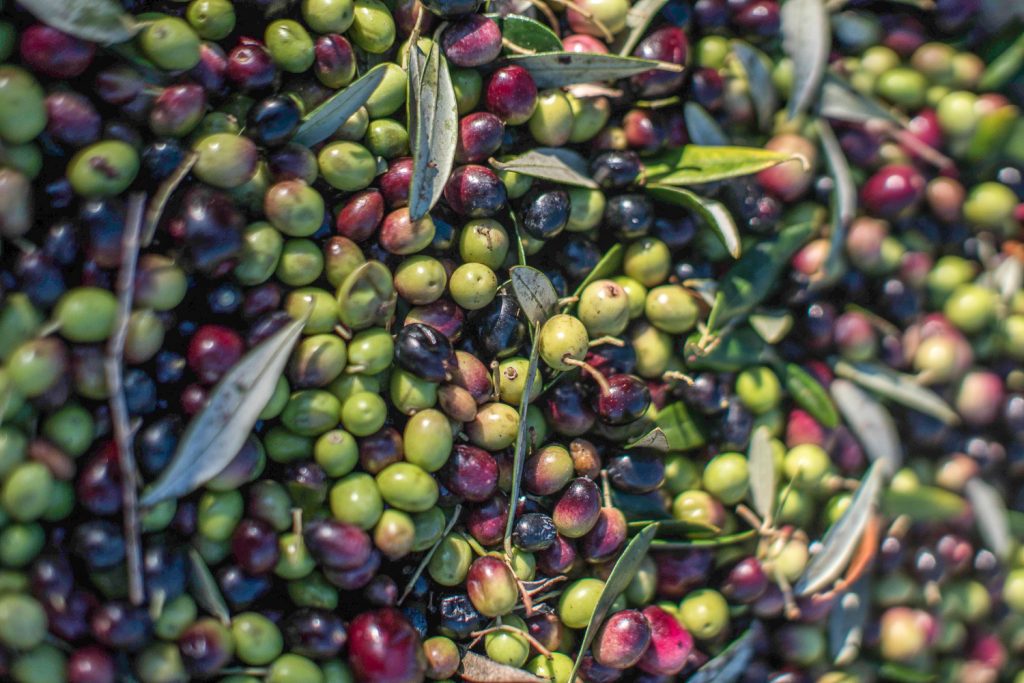
As visitors to Napa Valley quickly discover, the natural abundance of the region includes much more than top-quality grapes. Driving past the stretching vine rows of the Valley, one will also behold the unmistakable trunks and greenish-silver oblong leaves of olive trees. Here, vineyards share real estate with olive groves both on the land and on the table.
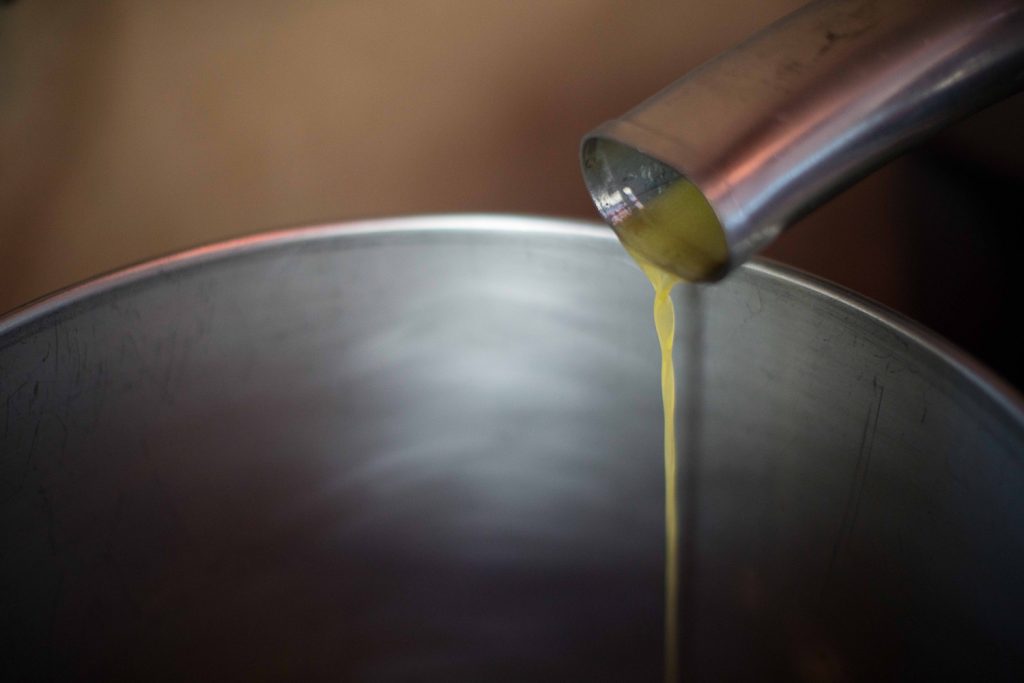
THE OLIVE’S DEEP ROOTS IN CALIFORNIA
California fully embraced its potential for olive oil in 1992, when Lila Jaeger founded the California Olive Oil Council (COOC) to provide resources for local growers. The COOC Taste Panel certifies approximately 400 oils per year, though olive farming in Napa Valley and throughout the state dates back much further than the council’s founding.
California’s olive oil history goes back more than two centuries to the Spanish explorers and Franciscan fathers who moved north from Mexico and painstakingly built missions between San Diego and Sonoma. The missionaries planted olive trees at each of their 21 established missions for both sacramental and practical purposes. It was used by the Catholic Church and in mission life for religious rites, food preparation, to treat wounds, and to oil machinery.
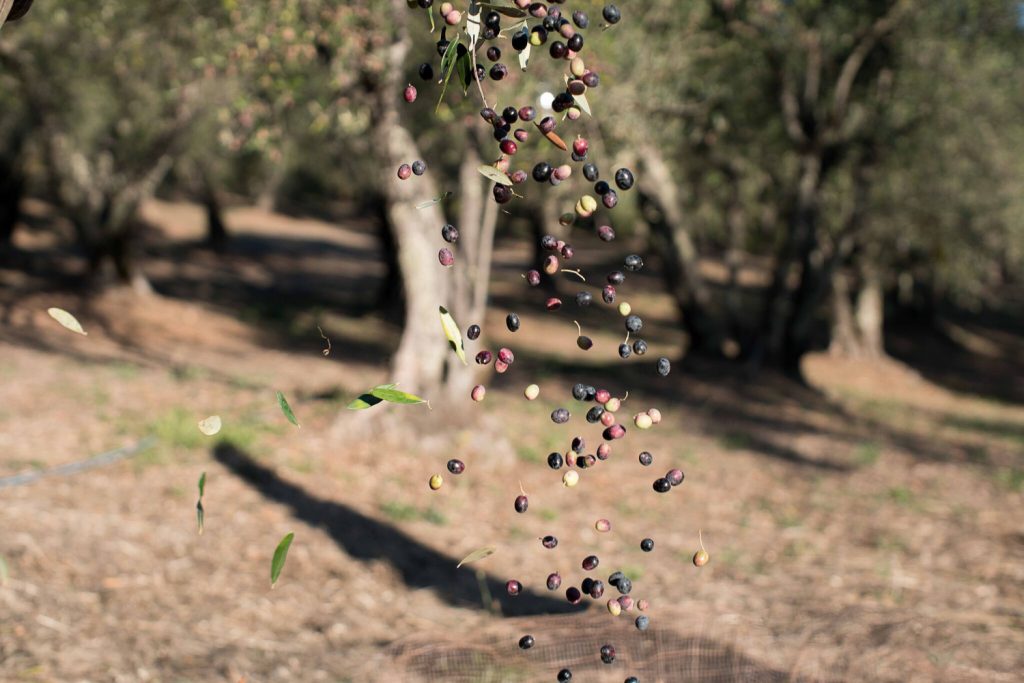
From these tentative beginnings, the California olive oil industry grew, and by the 19th century, it was thriving. The industry languished, however, throughout much of the 20th century, falling in and out of recessions due to imports and an overall lack of awareness. The situation changed in the 1990s when a new generation of health-conscious Americans rediscovered the flavor and benefits of olive oil. “People wanted to know more about the food they were eating. This shift helped pave the way for the artisan olive oil renaissance,” says vintner Gabrielle Leonhard O’Connell of O’Connell Family Wines. As a result, olive orchards were revived, and new groves were planted. At the heart of this resurgence was Napa Valley.
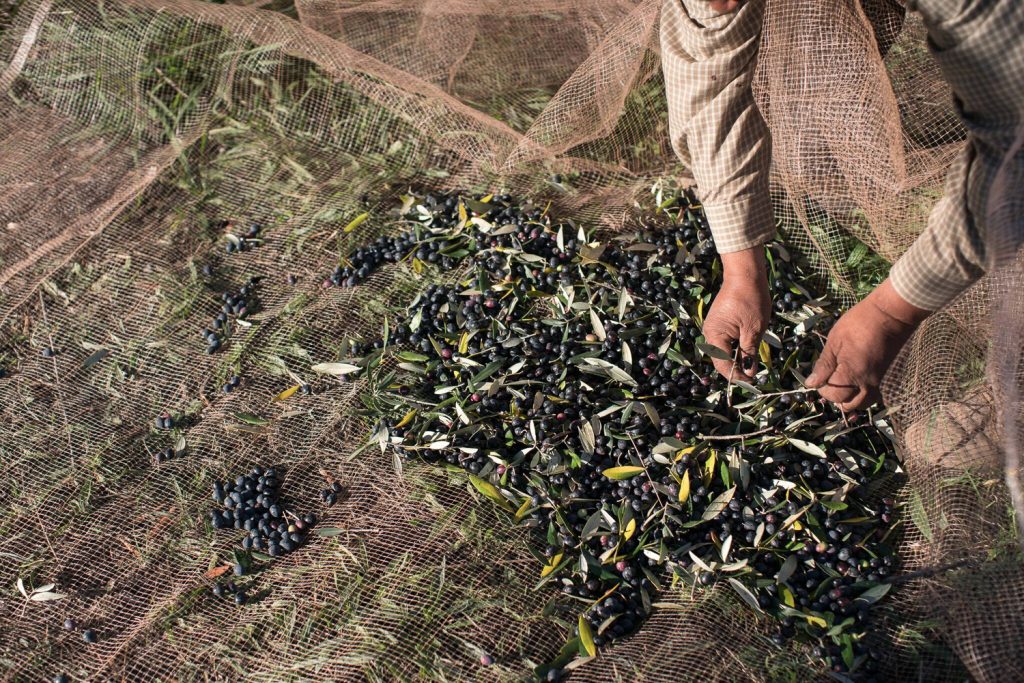
“At the time, a handful of producers were sincerely committed to producing olive oil, not just from a commerce point of view but from an integrity point of view and wanting to capture our history and preserve it,” continues Leonhard O’Connell. Among these olive oil pioneers were O’Connell Family Wines, Long Meadow Ranch, and St. Helena Olive Oil, who began producing award-winning small-production oils. The fruits of their labor are now some of the most popular gourmet products in and outside of California and are available to taste throughout Napa Valley.
NAPA PRODUCERS TO KNOW
“I grew up with everything farm to table in the truest earthy sense,” says Gabrielle Leonhard O’Connell vintner and Director of Winemaking at O’Connell Family Wines. “It was a natural continuation when we got our estate in Napa and I had land to play with that I would follow this tradition that was really near and dear to my heart.” Leonhard O’Connell’s deeply-inherited belief of biodiversity led her down a ten-year span of olive oil discovery in the 1990s which included crisscrossing the state to track down an original olive grove from the mission era. Her hard work was rewarded when she stumbled upon a colossal centuries-old tree in the middle of a 35,000-acre ranch near Point Conception. “Just as I was about to give up and turn around, I looked over an embankment and spotted silver branches. And by that time, I could spot an olive tree from a mile away,” reflects Leonhard O’Connell. She then led the restoration project to revive the ancient grove and propagated cuttings from the original trees. Today, her olive grove, set in Napa Valley’s Oak Knoll district, is an exact DNA match of the first olive tree planted in the La Purísima Mission.

In addition to organic grapes and olives, Leonhard O’Connell also grows, lavender, herbs, fruits, and vegetables and uses them to produce gourmet products that she showcases and accompanies with small bites and wine in her downtown Napa store and tasting room, Gabrielle Collection taste+. Their popular olive oil tastings are complemented by seasonal goodies from the estate garden and provide the perfect opportunity to tangibly appreciate the flavor nuances of a wide range of oils and ingredients. “We’re taking olive oil education a step further to wanting to pair it with food and wine and showing what to do with it once you get it home,” says Leonhard O’Connell. Some of the innovative pairings you may find on the menu are fresh kale with buttery extra virgin olive oil or organic popcorn with Cabernet Sauvignon sea salt and a savory extra virgin olive oil. A wine, chocolate, and popcorn tasting, and breakfast bites and wine pairing are also available and equally satisfying.
Nestled in the Mayacamas Mountains high above the Rutherford Bench, Long Meadow Ranch is home to vineyards, organic gardens, horses, and historic olive groves. “We inherited this amazing grove of trees that produced high-quality olives. That was the catalyst for us,” says Jeff Meisel, Vice President of Brand Development at Long Meadow Ranch. Their Prato Lungo (Italian for Long Meadow) groves are the oldest olive orchards in Napa Valley, dating back to the 1870s. The trees were abandoned for years until the owner, Ted Hall, and his son, Chris, discovered them and restored them in the 1990s. Today, Long Meadow cultivates eight acres of the ancient Prato Lungo trees as well as new groves that include Italian varieties Frantoio, Leccino, Pendolino, and Moraiolo.
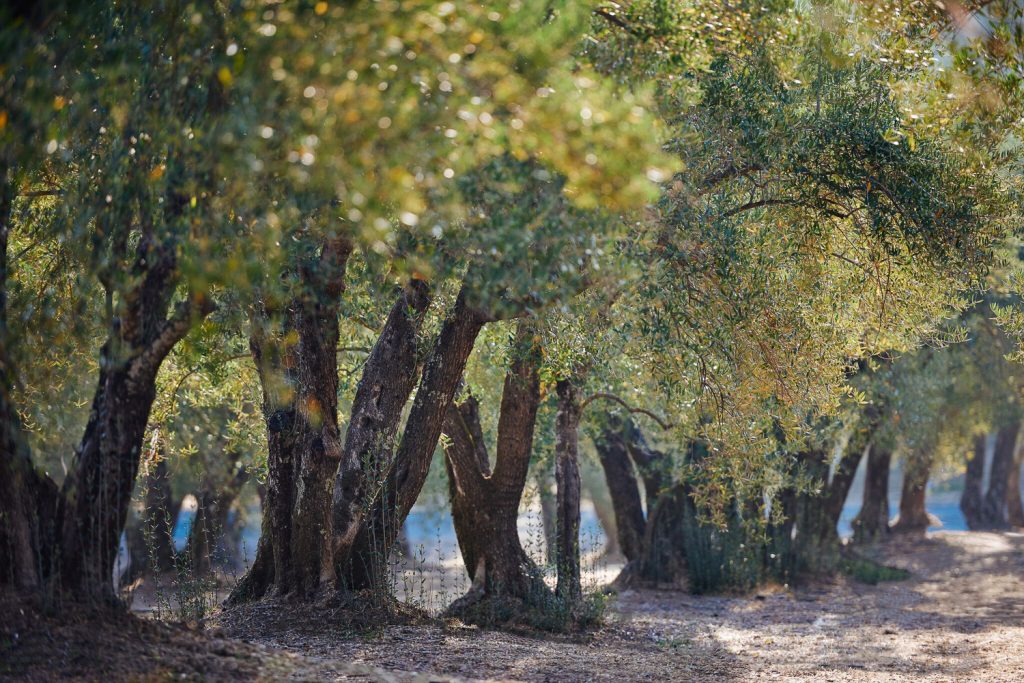
Guests can make reservations to tour the full ranch when booking the Mayacamas Estate Experience. The experience includes transportation to their remote mountainside location, a tour of the onsite wine caves and olive oil press, and a tasting of Long Meadow’s estate-grown wines and organic extra-virgin olive oil. An olive oil flight is also available to sample at their Farmstead General Store in St. Helena.

“It’s come a long way,” says Peggy O’Kelly, founder of St. Helena Olive Oil, reflecting on how far the industry has come. “In 1994, hardly anyone knew much about olive oil.” After retiring from a prosperous finance career to raise two young daughters, she found inspiration to join the up-and-coming Napa Valley Olive oil industry after COOC founder Lila Jaeger’s olive oil captured her heart. What transpired over the next two decades was a full-fledged business and a steep learning curve with many highs and lows.
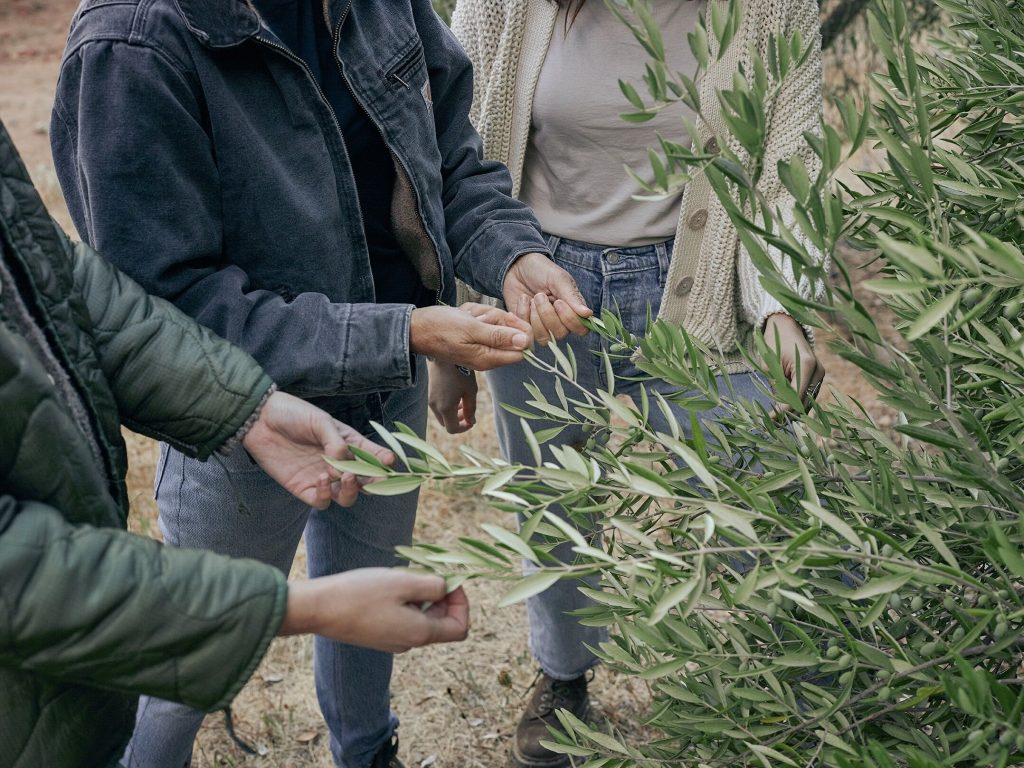
“I looked to Robert Mondavi for inspiration and learned from the Napa wine industry,” says O’Kelly. She took the direct-to-consumer retail concept and applied it to olive oil. She found a space in Rutherford and opened the country’s first olive oil tasting room. Aside from exposing more people to olive oil, one of O’Kelly’s many milestones was introducing orchard designated Napa Valley extra-virgin olive oil.
“We have relationships with growers throughout Napa Valley, and our job is to bottle that oil and tell its story. All of our oils have similar characteristics, but each one is different because of soil, method of pressing, or varietal. It’s very similar to wine,” shares O’Kelly.

The 2019 vintage was the first harvest for O’Kelly in two years after taking a hiatus following the 2017 Tubbs Lane Fire. While St. Helena Olive Oil no longer has a storefront that offers tastings, their full spectrum of products, including extra-virgin olive oils, vinegar, and other pantry essentials can be purchased online. O’Kelly’s young-adult daughters, Kaelin and Emily, are following in her footsteps and learning more about the family business. With the 2019 olive harvest under her belt, O’Kelly feels hopeful to open a new space for tastings and classes in the future.

I market, photograph, write about, and (mostly) drink wine.
Comments Off on Olive Oil: Napa Valley’s Other Liquid Gold